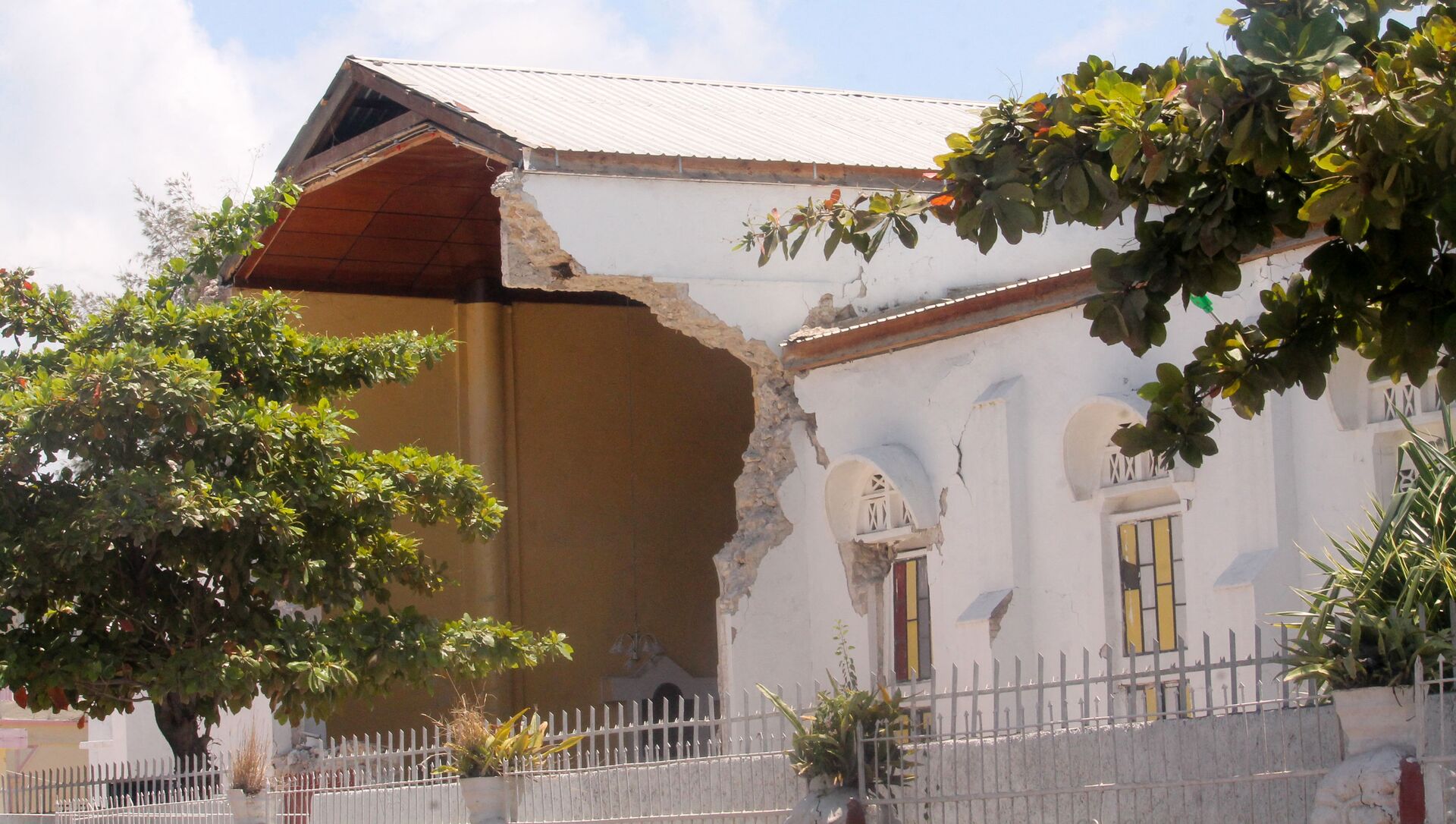https://sputnikglobe.com/20210823/buildings-constructed-with-thermocol-can-become-earthquake-resistant-in-future-indian-scientists-1083692416.html
Buildings Constructed With Thermocol Can Become Earthquake-Resistant in Future: Indian Scientists
Buildings Constructed With Thermocol Can Become Earthquake-Resistant in Future: Indian Scientists
Sputnik International
The scientists also claimed that other than earthquakes, the use of an expanded polystyrene core in the concrete walls of a building can provide thermal... 23.08.2021, Sputnik International
2021-08-23T13:35+0000
2021-08-23T13:35+0000
2023-02-09T13:08+0000
newsfeed
world
natural disaster
scientists
earthquake
https://cdn1.img.sputnikglobe.com/img/07e5/08/0f/1083606315_0:310:3072:2048_1920x0_80_0_0_fee4be583b032a39bf29cb3005905b0b.jpg
A team of scientists from India's premiere technology institute has found that Expanded Polystyrene (EPS) or thermocol has the ability to resist earthquake forces on up to four-storey buildings.The team, led by research scholar Adil Ahmad, tested a full-scale building and a number of wall elements constructed with thermocol at the National Seismic Test Facility (NSTF) of the Department of Earthquake Engineering at the Indian Institute of Technology (IIT) Roorkee.The team evaluated the elements constructed with thermocol under lateral forces that are similar to earthquakes. Later, the researchers supplemented the investigations with detailed computer simulations of a realistic four-storey building.Nearly 60 percent of India is prone to earthquakes of different intensities.Earlier this year, the Indian government stated that 965 earthquakes of magnitude three and higher were recorded in 2020 and 13 of them were in the National Capital Region and its surrounding areas.The team also stated that the force being applied on a building during an earthquake arises due to the inertia effect and depends on the mass of the building. However, thermocol resists earthquakes by reducing the mass of the building.The scientists have also emphasised that the technology has the potential to save construction materials and energy. It may also help in the overall reduction of the carbon footprint of buildings.Last Saturday, Indian Minister of State (MoS) for Science and Technology Dr Jitendra Singh announced that India will have 35 more earthquake observatories by the end of this year and the country aims to add 100 more by 2026.
Sputnik International
feedback@sputniknews.com
+74956456601
MIA „Rossiya Segodnya“
2021
Sushmita Panda
https://cdn1.img.sputnikglobe.com/img/07e5/05/12/1082926186_0:0:2048:2048_100x100_80_0_0_4474d0d7e27a36878eb8727832be74b4.jpg
Sushmita Panda
https://cdn1.img.sputnikglobe.com/img/07e5/05/12/1082926186_0:0:2048:2048_100x100_80_0_0_4474d0d7e27a36878eb8727832be74b4.jpg
News
en_EN
Sputnik International
feedback@sputniknews.com
+74956456601
MIA „Rossiya Segodnya“
Sputnik International
feedback@sputniknews.com
+74956456601
MIA „Rossiya Segodnya“
Sushmita Panda
https://cdn1.img.sputnikglobe.com/img/07e5/05/12/1082926186_0:0:2048:2048_100x100_80_0_0_4474d0d7e27a36878eb8727832be74b4.jpg
newsfeed, natural disaster, scientists, earthquake
newsfeed, natural disaster, scientists, earthquake
Buildings Constructed With Thermocol Can Become Earthquake-Resistant in Future: Indian Scientists
13:35 GMT 23.08.2021 (Updated: 13:08 GMT 09.02.2023) The scientists also claimed that other than earthquakes, the use of an expanded polystyrene core in the concrete walls of a building can provide thermal comfort. India has large temperature variations during different seasons of the year. Thermal comfort can help manage the variability along with structural safety.
A team of scientists from India's premiere technology institute has found that Expanded Polystyrene (EPS) or thermocol has the ability to resist
earthquake forces on up to four-storey buildings.
The team, led by research scholar Adil Ahmad, tested a full-scale building and a number of wall elements constructed with thermocol at the National Seismic Test Facility (NSTF) of the Department of Earthquake Engineering at the Indian Institute of Technology (IIT) Roorkee.
The team evaluated the elements constructed with thermocol under lateral forces that are similar to earthquakes. Later, the researchers supplemented the investigations with detailed computer simulations of a realistic four-storey building.
Nearly 60 percent of India is prone to earthquakes of
different intensities.
Earlier this year, the Indian government stated that 965 earthquakes of magnitude three and higher were recorded in 2020 and 13 of them were in the National Capital Region and its surrounding areas.
"The analysis shows that a four-storey building constructed with this technique is capable of resisting earthquake forces, even in the most seismic zone (V) of the country, without any additional structural support", Professor Yogendra Singh, who supervised the research, said in a statement.
The team also stated that the force being applied on a building during an earthquake arises due to the inertia effect and depends on the mass of the building. However, thermocol resists earthquakes by reducing the mass of the building.
The scientists have also emphasised that the technology has the potential to save construction materials and energy. It may also help in the overall reduction of the carbon footprint of buildings.
Last Saturday, Indian Minister of State (MoS) for Science and Technology Dr Jitendra Singh announced that India will have 35 more earthquake observatories by the end of this year and the country aims to add 100 more by 2026.





